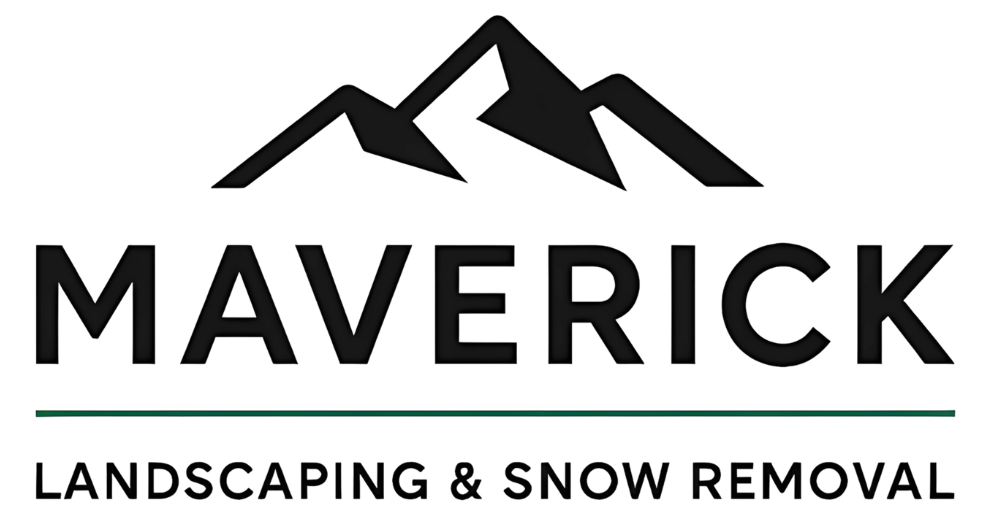One of the first questions homeowners ask is, “How much will my landscaping cost?” In 2025, landscaping prices in Toronto continue to reflect the scope of work, materials chosen, and labor involved.
Let’s break down what you can expect:
General Cost Range
For standard landscaping projects (not full property makeovers), Toronto homeowners typically spend somewhere between about $2,500 and $10,000 on their landscaping in 2025.
Smaller projects or basic upgrades might be even less – a simple front yard refresh could be around $1,000 – while very elaborate projects (complete redesigns of large yards with premium features) can reach $25,000 or more.
In fact, high-end custom landscapes with luxury features often exceed $25,000, and an average full landscaping overhaul in Ontario can range from $25,000 up to $75,000 for extensive projects.
Don’t be alarmed by the high end – that typically involves expansive properties or upscale materials. The key point is that costs vary widely with project size and complexity. To give context, one
Canadian cost guide noted that individual landscaping projects nationally average around $1,800 to $6,900, while a full overhaul averages about $17,200. Toronto tends to be on the higher side of national averages due to the city’s labor and material costs, but many common projects will still fall in the mid-thousands range.

Pricing Models
In Toronto, hourly rates for professional landscaping typically range from $50 to $150 per hour per worker, depending on the service and expertise required. This is common for maintenance or small jobs. For larger designs and installations, most companies will quote a flat project price that includes all labor, materials, and sometimes design fees.
Several factors can drive your landscaping cost up or down:
- Property Size & Access:
Bigger yards need more materials and labor. Also, if access to your yard is difficult (say, row houses with no alley, meaning everything must be carried in by hand), labor costs can increase notably – a backyard with no machine access can add 20 – 40% more labor time compared to an easily accessible site.
- Material Choices:
The types of materials you select have a major impact. Natural stone patios cost more than concrete, for example, and premium exotic plants cost more than common native plants. However, material cost is often not as significant as the labor required to install those materials. Choosing a material that’s labor-intensive (like very intricate pavers or a large wood deck) can raise the price more than the material’s price tag itself. We’ll provide examples in the service breakdown below.
- Design Complexity:
Intricate or custom designs (curved patios, multi-level terraces, elaborate garden layouts) require more planning and skilled labor, thus higher cost, compared to a simple rectangular lawn or a basic garden bed. Custom features like water installations, extensive lighting, or outdoor structures also add complexity.
- Timing:
Landscaping is seasonal. Demand (and prices) peak in late spring and summer. If you book in the off-season (late fall or winter for planning, or very early spring), some companies offer off-peak discounts of around 10 – 15%. So timing can affect your quote. Emergency or rush jobs might cost premium, whereas scheduling flexibly could save money.
Cost ranges by service type in the Toronto area
| Service Type | Typical Cost (Toronto 2025) | Details/Notes |
| Lawn Care & Maintenance (basic mowing, trimming) | ~$50 – $100 per visit for average yards, or $150 – $500 per month for ongoing care | Regular lawn service often includes mowing, edging, and seasonal fertilizing. Price depends on property size and frequency. A one-time yard cleanup might start around a few hundred dollars. |
| Sod Installation (new lawn) | ~$1.70 – $3.50 per sq. ft. installed. Average yard ~$3,000+ | Removing old lawn, grading, and laying fresh sod has labor costs. For example, HomeStars data shows sod installation averaging about $3,055 in Toronto. Seeding is cheaper but takes longer for full lawn coverage. |
| Garden Bed Planting (flowers, shrubs) | ~$500 – $3,000 for a typical planting project | Costs vary by plant quantity and species. A simple front garden with hardy shrubs might be on the low end; a curated landscape with mature trees or exotic plants can be more. (Plants range $20 – $85 each plus labor.) |
| Hedge & Tree Trimming | Hedges: ~$200 – $600 per trimming job. Tree Pruning: ~$150 up to $3,000+ per tree | Small hedges or shrubs are inexpensive; large hedges or extensive hedge work averages ~$600. Tree work depends on tree size & complexity – pruning a small tree might be a couple hundred dollars, whereas removal of a large tree could be a few thousand (especially if requiring climbing or a crane). |
| Patio or Walkway (Hardscaping) | Interlocking Pavers: ~$20 – $40 per sq. ft installed (material & labor). Concrete: ~$15 – $30 per sq. ft. | For a 100 sq. ft patio, expect roughly $2,000 – $4,000 with pavers, or a bit less with plain concrete. Design complexity (curves, custom patterns) and high-end materials (natural stone can be 5 – 10% more than pavers) will increase cost. Remember to include base preparation and polymeric sand/sealing in quotes for longevity. |
| Deck or Fence Construction | Wood Deck: $50 – $100 per sq. ft. Wood Fence: ~$3,500 – $7,000 for a typical yard. | Wood decks provide raised outdoor living space; composite decking costs ~25 – 50% more than wood for a premium low-maintenance finish. Fence costs depend on length and style; e.g. a basic 6-foot wood privacy fence for a suburban yard might be around $5,000. Permits may be required for decks/fences over certain heights (check local bylaws). |
| Landscape Lighting | ~$2,000 – $5,000 for a full outdoor lighting setup (average) | Installing professional LED landscape lights (path lights, up-lighting trees, etc.) involves wiring and transformers. A basic front-yard package might start near $2k, whereas extensive back yard lighting with many fixtures can go up to $5k or more. This greatly enhances evening ambiance and security. |
| Sprinkler/Irrigation System | ~$2,400 – $7,000 for in-ground sprinkler installation | Automating your watering can save time. Cost depends on yard size and number of zones. In Toronto, typical sprinkler system installs often fall in the ~$1,700 – $3,000 range for average lots, but larger properties or complex systems (with drip irrigation, smart controllers, etc.) cost more. Always ask if quotes include permits (if required) and winterization setup. |
| Water Features (pond, fountain) | ~$5,000 – $20,000 installed | Even a small pond or waterfall feature involves pumps, excavation, and landscaping around it. Simple self-contained fountains are on the low end (a few thousand), whereas a custom pond with lighting and stream could easily hit five figures. These features add a unique touch but require significant planning (and future maintenance). |
| Complete Landscape Remodel | Ranges widely: from ~$15,000 for moderate re-design to $50,000+ for luxury projects. | A complete transformation might include new patio, lawn, gardens, fencing – essentially starting from a blank slate. In Toronto, large projects commonly land in the $20k – $40k range. For example, in nearby cities some landscaping projects reach $40k – $50k for expansive designs. Always get a detailed proposal; at this scale, multiple phases or financing options might be considered. |
(Sources: HomeStars price guides and industry data for 2025, with Canada-wide averages as reference.)
As the table shows, prices vary by task, and every project will have unique aspects. It’s wise to get a personalized quote for your specific needs. The above ranges should, however, help you ballpark what’s reasonable in 2025 for Toronto. Also note that labor is a major component (often 60 – 80% of the cost), so anything that makes labor easier or harder (like site conditions or project complexity) will reflect in the price.

Avoiding Hidden Fees and Getting Fair Quotes
When budgeting, nobody likes surprises. Here’s how to ensure you’re getting an apples-to-apples quote and avoid hidden costs:
- Request Itemized Quotes:
Ask each landscaper to provide a breakdown of costs for materials, labor, and any extra services. This level of detail makes it clear what you’re paying for and prevents sneaky “add-ons” later. For instance, does the quote include hauling away debris, or will that be extra? Are design and permit fees included, or charged separately? A transparent, itemized estimate lets you see that everything is accounted for – which protects you from later claims that something “wasn’t included” and will cost more. As one guide suggests, ensure every company you get a quote from has the same project info so you can accurately compare and see who offers the best value.
- Discuss Permits and Regulations:
Certain landscaping work (fences over a certain height, decks above ground level, significant grading changes, etc.) may require city permits in Toronto. Confirm who is responsible for obtaining and paying for permits – many landscapers will handle the process but pass the permit fee onto you at cost. This should be clarified in the quote. If your design might trigger permits or HOA approvals, bring it up and avoid a “hidden” cost of compliance. Additionally, it’s wise to consult with professionals who offer landscape design services in Mississauga to ensure all local regulations are met. They can help you navigate the permit process and provide insight into any potential design modifications that could save you from unexpected costs. Always prioritize communication with your landscaper so that you’re fully informed about any requirements related to your project.
- Ask About Site Prep and Cleanup:
Sometimes quotes can be deceptively low if they leave out site preparation or cleanup. For example, if you’re redoing a yard, will the contractor remove old sod or existing concrete? Will they charge for dumping fees? A professional quote should include clearing the work area and leaving your property tidy. Similarly, if major excavation is needed, ask if topsoil/fill is included to level things off, etc. Avoid vague language – if the quote just says “Install patio – $10,000” with no detail, ask for clarification on what prep and finish work is part of that.
- Contingency for Unseen Issues:
Good contractors sometimes build in a small contingency or at least warn that if they hit an unseen issue (like discovering an old tree stump under the lawn or very poor soil that needs replacing), there could be a change order. This is normal, but the key is that they should communicate it. You can ask, “What kind of scenario might increase the cost from this quote?” Just raising the question helps ensure the landscaper is upfront. If they say “nothing will change” but you suspect potential issues, be cautious. Most will be honest: e.g., “If we find the subsoil is all clay and needs extra drainage, that would be an extra X dollars which we’d discuss with you.” Having this dialogue prevents nasty surprises mid-project.
- Get It in Writing:
We’ve said it before but it bears repeating – always have a written contract. Verbal promises about “yeah, we’ll take care of that” should be put into the agreement. If the contract is comprehensive, there’s less room for hidden fees. Should something genuinely new come up, a written change order should be drafted for any additional work/cost, so you approve it before proceeding. Professional landscapers know this protocol well. If a contractor tries to tack on charges without documentation or consensus, you have the contract to point to for resolution.
By being proactive with these steps, you can avoid common hidden costs and ensure the quote you accept is truly what you’ll pay. A trustworthy landscaper, in fact, wants you to be comfortable with the budget and will happily explain how they price the job. It’s in both parties’ interest to have clarity.
Why Professional Landscaping Is Worth It: Time, Value, and Quality
Considering the costs involved, you might wonder if hiring a professional landscaper is really worth it. The short answer is yes – a well-executed landscape project provides tangible and intangible benefits that often outweigh the monetary expense. Here are some of the key ways professional landscaping adds value:
- Saves You Time and Effort:
Perhaps the most immediate benefit is the time you reclaim. Landscaping, especially anything beyond basic lawn mowing, can be very labor-intensive and time-consuming if you attempt it yourself. Pros can get work done quickly and effectively thanks to their expertise and equipment. What might take you an entire summer of weekends, they can accomplish in a week or two. Plus, they handle the dirty work – hauling heavy soil, digging, operating machinery – so you don’t have to break your back. Your time is valuable, and by hiring professionals you can focus on your job, family, or simply relaxing rather than sweating over a DIY patio. Many homeowners also find that pros come with creative solutions that would have taken them endless trial and error to figure out. In short, bringing in a landscaper eliminates hassles and accelerates your project.
- Avoids Costly Mistakes:
Ironically, DIY landscaping can end up costing more if things go wrong. There are many “unknown unknowns” – for example, using the wrong type of mulch, or planting a tree too close to the house, can lead to problems that require expensive fixes. An untrained attempt at grading could even cause drainage issues or basement leaks.
- High-Quality Results (Beauty & Function):
There is a stark difference between a DIY job and a professionally finished landscape – in both appearance and durability. Professionals make your property look incredible. They are trained in design principles (balance, color harmony, scale) that produce a cohesive and attractive look rather than a patchwork of ideas. The construction quality tends to be higher as well: base preparations for pavers will be done to industry standards, plants will be properly planted with the right soil amendments, and so on. This means your landscape not only looks great when newly completed, but continues to age gracefully. A well-built patio won’t start sinking or shifting after the first winter freeze, and healthy plantings will mature into a lush garden rather than struggle. Moreover, pros can incorporate features you might not achieve alone – from custom lighting that highlights your favorite tree to a smooth stone walkway that ties everything together. The outcome is an outdoor space that is both beautiful and usable, truly an extension of your home.
- Boosts Property Value:
Landscaping is widely regarded as one of the top home improvements for return on investment. Numerous experts and real estate studies note that landscaping can significantly enhance a home’s value. First impressions matter – a house with great curb appeal (neat front lawn, attractive entryway plants, maybe a flagstone path) will fetch higher interest from buyers and often a higher price. Even if you’re not selling immediately, enjoying a nicely landscaped yard can psychologically feel like your property is more valuable to you. Think of it as investing in “outdoor equity.” In Toronto’s competitive real estate market, professional landscaping can set your property apart. Beyond monetary value, there’s also the lifestyle value: you gain functional outdoor areas (a patio for entertaining, a peaceful garden corner) that improve your quality of life. This “value” can’t be measured in dollars alone, but it’s a real benefit of hiring a skilled landscaper to realize your yard’s potential.
- Ensures Safety and Compliance:
Professional landscapers also bring knowledge of safety and local regulations. They won’t, for example, accidentally cut a gas line when digging (they obtain utility locates before work), and they know city bylaws – such as rules on tree removal or fence height – so your project doesn’t violate any codes. If you have children or pets, pros consider their safety too (e.g. recommending non-toxic plants and secure fencing). These considerations protect you from liabilities or fines that could arise from well-intentioned but uninformed DIY work.
In summary, professional landscaping delivers high-quality, lasting outcomes efficiently, while sparing you a lot of stress. The combination of design savvy, proper execution, and added property value means that, although hiring a landscaper is a financial expense, it often pays for itself in the value and enjoyment you get back. Many homeowners later say their only regret was not doing it sooner.
Of course, to reap these benefits, you need to hire a reputable contractor. That’s why we emphasized finding a qualified professional – the true value shines through when the work is done right. Landscaping is a prime example of “you get what you pay for”: investing in skilled labor and good materials now means you won’t be paying twice to fix problems later. Think of it as investing wisely in your home and lifestyle.

Common Misconceptions About Landscapers (Debunked)
Despite the advantages, some misconceptions persist about landscapers and landscaping projects. Let’s address a few of these myths:
- “Landscapers just cut grass and plant flowers – I can do that myself.”
It’s true that basic lawn mowing or planting annuals are tasks many homeowners handle. But professional landscapers do far more than basic yard work. They are trained in horticulture, design, and construction techniques to tackle comprehensive projects that vastly improve your property. They can solve grading issues, create efficient drainage, design stunning hardscapes, and choose the right plants for each spot (taking into account soil, light, spacing, and future growth). The average homeowner typically doesn’t have the breadth of knowledge or tools (laser levels, plate compactors, etc.) that a landscaping crew brings. So while mowing the lawn might be easy, landscaping as a whole profession is much more involved. Hiring a landscaper is not an admission that you “can’t garden”; it’s a way to elevate your yard beyond what DIY alone could achieve.
- “Hiring a landscaper is too expensive – DIY will always save money.”
This is a very common concern. Sure, if you only count immediate out-of-pocket dollars, doing it yourself avoids paying labor. But consider the true costs: your time (hours or weeks of labor), the risk of mistakes, and the lack of bulk buying power. Professionals often get contractor pricing on materials and know exactly how much to order – a DIY might over-buy (wasting money) or under-buy (causing delays).
More importantly, as discussed, costly mistakes can erase any upfront savings. If you install a patio improperly and it floods your basement, that’s thousands in damages. Or if plants keep dying because they weren’t planted correctly, you’ll spend more replacing them. A landscaper’s expertise ensures the job is done right, which can actually be more cost-effective in the long run.
Additionally, many people underestimate how many tools and pieces of equipment they might need to rent or buy to DIY – those costs add up. When you hire a landscaper, you’re effectively renting an entire team’s skills and equipment for the duration of the project. For anything beyond very small improvements, professional help often yields a better result for a reasonable incremental cost. Think of it this way: landscaping is a significant investment in your home; entrusting it to pros safeguards that investment.
- “Any contractor who knows construction can do landscaping.”
You might be tempted to hire the cheapest handyman or a general contractor friend to do your landscaping. But landscaping is a specialized field. A crew might need knowledge from stone masonry to soil science to horticulture in a single project. Reputable landscapers have that multidisciplinary expertise.
They also coordinate sub-trades if needed (e.g. electricians for lighting, arborists for large tree work) and ensure everything integrates. A general contractor building a deck might not plan for drainage around it, whereas a landscaper will. Additionally, professionals dedicated to landscaping stay updated on industry best practices and plant diseases/pests common in the area.
Choosing a qualified landscaping company (as opposed to a jack-of-all-trades with a skid-steer) means you get the benefit of that specialized focus. It’s not to disparage other contractors, but simply to highlight that quality landscaping is more than just laying bricks or spreading topsoil – it’s the art and science of creating an outdoor environment. Hiring someone who “dabbles” in landscaping could leave you with a project that lacks the polish or longevity of one done by a specialist.
- “Landscapers don’t need to be certified or insured – it’s just outdoor work.”
This misconception can get homeowners in trouble. In reality, you should only hire insured, legitimate landscaping businesses (as detailed in the selection section). If you go with an under-the-table crew to save a few bucks, you are exposed to liability if a worker gets injured on your property, and you have little recourse if the work is poor. On the other hand, professional landscapers who are certified or members of industry associations have proven their knowledge and professionalism.
For example, many Ontario landscapers carry the Landscape Industry Certified credential or are members of Landscape Ontario, signaling that they uphold standards and safety. Just because the work is outdoors doesn’t mean it’s any less technical or worthy of professional oversight – in fact, operating heavy equipment or modifying land grades can be dangerous without proper training.
Trust your project to those who take their trade seriously. It might cost a bit more than a cash deal with someone’s friend, but it protects you and ensures a better outcome.
By dispelling these misconceptions, we see that landscapers bring a lot of value to the table. The right professional is not a luxury reserved for the wealthy – they are an accessible partner for anyone who wants to improve their property efficiently and effectively. Understanding this will help you approach your landscaping project with the right mindset and realistic expectations.

Next Steps: Planning Your Landscaping Project
Feeling informed and ready to move forward? Here are some actionable next steps to help you kick-start your Toronto landscaping project and find the right partner:
- Define Your Goals and Budget:
Start by outlining what you want from your outdoor space. Make a list of “must-haves” (e.g., a patio for dining, new lawn for kids to play, privacy hedges) and “nice-to-haves” (e.g., water feature, built-in BBQ). Consider functionality (do you need a walkway? storage? lighting for evening use?) as well as style. At the same time, determine how much you are comfortable investing.
Having even a rough budget range (e.g. “around $10k” or “no more than $30k”) will help guide conversations with landscapers. Being aware of your needs and budget allows you to communicate clearly and ensures the proposals you get are realistic. It’s okay if your wish list and budget don’t perfectly align at first – a good landscaper will help prioritize features to meet your target.
- Research and Shortlist Landscapers:
Use trusted sources to find reputable landscapers in the Toronto/GTA area. Websites like HomeStars are an excellent starting point – you can search for Landscaping Companies in Toronto and read reviews and ratings easily. HomeStars even awards annual “Best of” accolades; seeing a company that is a HomeStars Best of 2025 winner or has a high rating with many reviews is a promising sign.
Additionally, check Landscape Ontario’s “Find a Pro” directory to locate member companies near you – membership implies they’ve been vetted to some degree. Personal recommendations are great too: ask neighbors or friends whose yards you admire. Aim to shortlist about 3 companies that seem to fit your project type and have good reputations.
- Interview and Get Quotes:
Contact your shortlisted firms to schedule consultations. Many offer a free initial consultation, where they’ll come see your property. Treat this like an interview – you’re evaluating them as much as they are evaluating the project. Ask questions such as:
- Have they done similar projects? Can they show pictures?
- What suggestions do they have for your space?
- How long have they been in business?
- Do they handle all work in-house or use sub-contractors (and for which parts)?
- What timeline do they foresee (when could they start, and how long to finish)?
- What warranty do they offer on their work?
- Are they fully insured and can they provide proof? (You should already know the answer is yes – but it’s good to hear how they respond and ensure they don’t dodge the question.)
- What certifications or training do their team members have?
- How do they handle design – is there a separate design fee or included in the quote?
- Pay attention not only to the answers but the communicativeness.
A landscaper who explains things clearly about, say, how they would approach the project or discusses potential challenges openly is likely to be straightforward to work with. After the site visits, you should receive written quotes from each. Review these carefully (make sure they’re detailed as discussed). It can be helpful to create a comparison chart for yourself, noting differences in scope or materials each is proposing. Don’t hesitate to follow up with each company to clarify any discrepancies or ask for adjustments to the quote.
- Check References and Final Due Diligence:
Before making your final decision, do a final background check. Read the most recent reviews for each finalist company. If not already provided, ask the landscaper for a couple of past client references you can call. A quick chat like, “Hi, I’m considering hiring XYZ Landscaping; I know they did your backyard last year – were you happy?” can be incredibly insightful. Verify insurance and any licenses. This extra step might seem like overkill, but when you’re spending thousands of dollars, it’s worth a day or two of diligence. Trust is key – you’ll be working closely with this contractor, possibly for several weeks. You want to feel sure you’re in good hands.
- Select Your Landscaper and Finalize the Plan:
Based on all the information – quote, rapport, references – choose the landscaper that offers the best balance of value and confidence for you. It might not be the cheapest, but likely the one you feel will deliver the best results. Communicate your decision to the company and review the contract together. Make sure every aspect you care about is written in, including any specific materials or brand of product you wanted (for example, if you requested a certain paving stone or a maple tree cultivar, ensure it’s specified). Also confirm the payment schedule (never pay 100% upfront; a typical schedule might be 10% on signing, 40% on start, 40% midway, 10% upon completion – or similar). Once signed, discuss and secure a tentative start date. Quality landscapers can be booked months in advance especially in peak season, so planning ahead is important. If timing is a concern, booking in fall for spring work, for example, can lock you into the schedule.
- Prepare for the Project:
As the date approaches, prepare your property and yourself. Remove any personal items or furniture from work areas. If access is needed through a neighbor’s yard, coordinate permission if not already done. Plan for any disruptions (noise, dust) – let family and neighbors know the timeline. The more cooperative you are during the work (within reason), the smoother it will go. Maintain communication with the landscaper – they should inform you of each phase. If any changes arise, insist on discussing them and agreeing on any cost difference in writing (legitimate changes should be fine; you just don’t want confusion).
- Enjoy Your New Landscape – and Maintain It:
Once the project is complete, do a thorough walkthrough with the contractor. Use your checklist to verify all deliverables are met. If something is slightly off, a professional will address it (e.g. adjusting a misplaced plant or replacing a cracked stone). After that, it’s time to enjoy! Start using your new patio or garden and relish the improved curb appeal. Just remember that even low-maintenance landscapes need some care – follow the maintenance guidelines given (watering new plants adequately, etc.). You might even schedule the landscaper for seasonal check-ups or garden bed refreshes if you prefer. Taking care of the landscape will ensure it stays beautiful for years to come, maximizing the return on your investment.
By following these steps, you’ll go from an initial idea to a completed landscape in a methodical, confident way. The key themes are preparation, comparison, and communication. Planning a landscaping project doesn’t have to be overwhelming – with current information (like this guide) and the help of a trustworthy professional, you’re well on your way to achieving the outdoor space you’ve been dreaming of. Here’s to a successful project and a gorgeous landscape in 2025!














